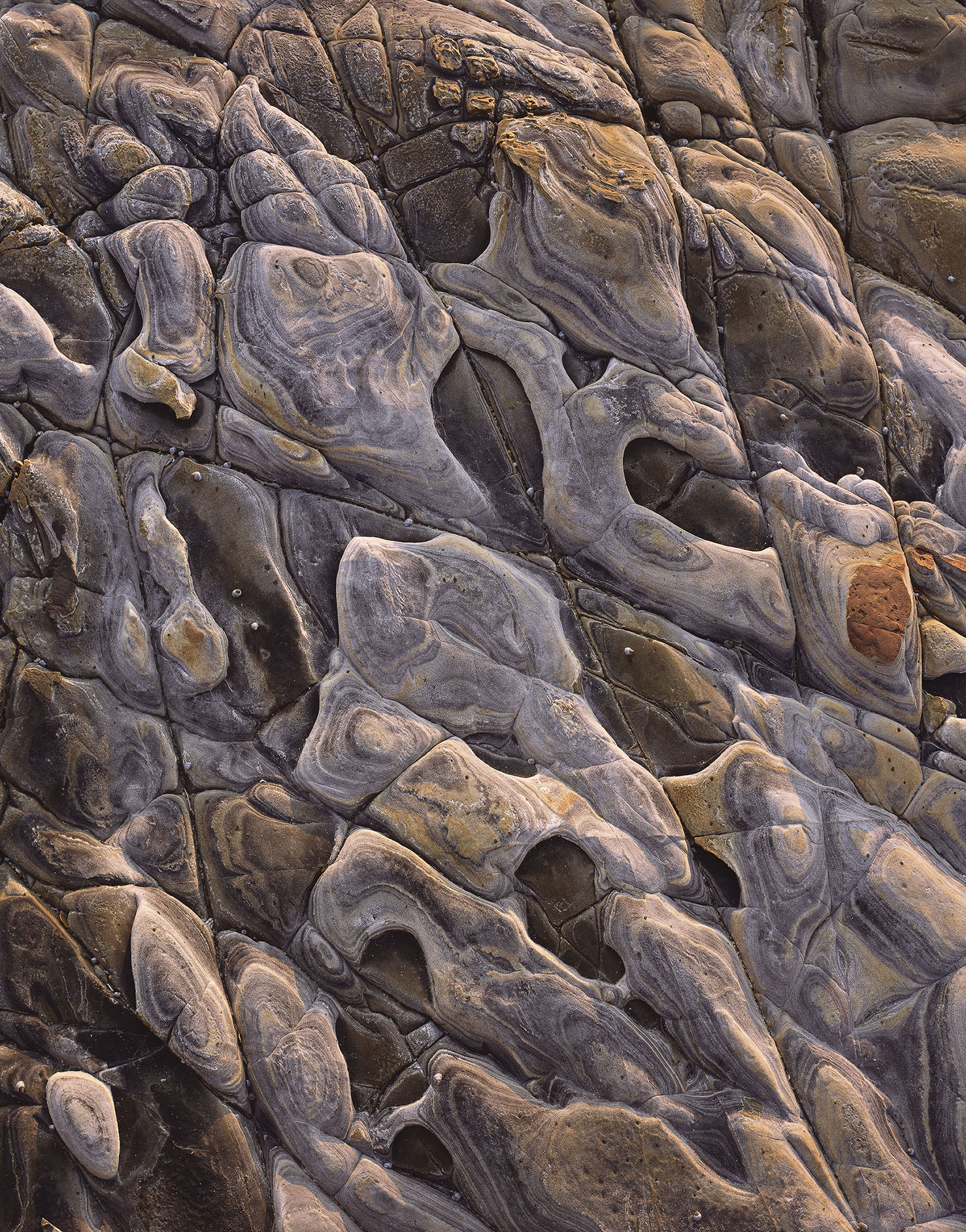
The Photograph Considered number forty six – Mark Darragh
Coastal topographies 4 x 5 transparencies
This series developed from a project I’ve been working on sporadically for over a decade, photographing regions of Victoria’s coastline. Much of that work was initially wider seascapes and only occasional closeups and details. In 2015 I revisit the Gippsland Coast and made a series of photographs focusing on microhabitats and topographies along shorelines and the intertidal zone. Since then the series has taken on a life of its own and expanded to include coastal areas across Victoria and Tasmania.
The two photographs presented here are both from the North West Coast of Tasmania. They were taken a few months apart but share a common geological stratum.
Coastal Topographies No.1 (above)
The first photograph was made on a calm, clear day in the early evening. I had plenty of time to look for a potential subject and compose an image but the key was waiting for the light which although fleeting, transformed the scene. A nearby fuel reduction burn sent a thin plume of smoke far out to sea and I waited for the sun to drop behind the smoke to soften and warm the light. The result is a subtle glow and the low angle of the sun brings out the relief of the rock platform. I’ll let the viewer make their own judgment but I’m pleased with the interplay of warm and cool colours and the tactile, three-dimensional quality of the final photograph.
Coastal Topographies No.2
The second photograph was made some months later in quite different conditions. Tasmania had experienced two weeks of wild weather and along the North Coast, heavy rain squalls and strong, gusty winds were the order of the day. Given the weather, I hadn’t planned any photography that day but driving past the headland we stopped for a “quick look”. Anyone who is, or knows, a Large Format Photographer will understand what that can mean ….. it’s generally not quick!
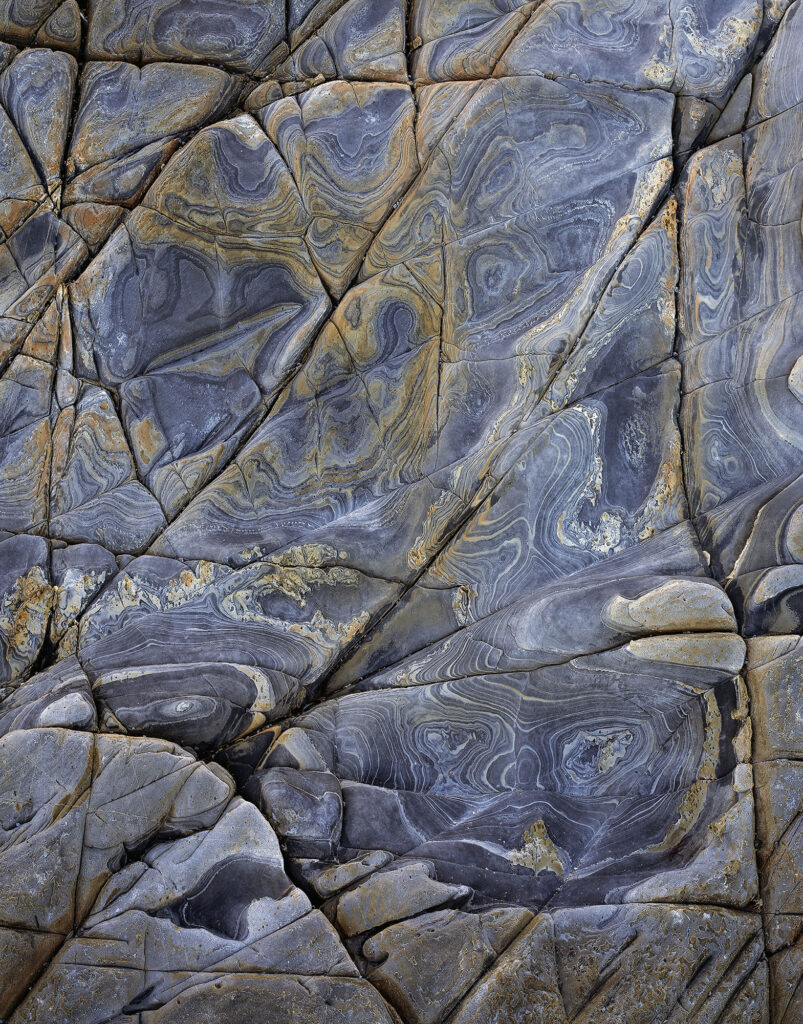
Compared with the location of the first photograph, this section of the rock platform is much more exposed and the energy of countless waves has smoothed all but the deepest joints and fissures. It was an area that I had looked at on our last visit and even taken a reference “sketch” on my phone but passed over in favour of more textured rock. This time, moisture from waves and rain had brought a new intensity to the colour and patterns in the rock.
A rising tide and swell made for a rather spontaneous photograph. The old maxim “Never turn your back on the ocean”, applies equally to having your head under a dark cloth and I hurried to compose and focus, all the while being conscious of each wave reaching the rock platform. After quickly exposing two sheets of film, the photographer and camera retreated hastily retreated before the sea reclaimed the rock platform for another tide cycle.
Heavy cloud in the west had covered the sun so the rock platform was lit by the open blue sky above. Generally, I use a mild 81 series filter to counter the blue colour cast, which transparency film faithfully reproduces for better or worse. Because of threat of a rogue wave hitting the camera, I didn’t go back to my pack for a filter therefore the film was unfiltered and I have taken a little blue out of the digital file.
The final composition is not dissimilar to my reference shot from the first visit. Despite being taken quickly, I still find it a strong photograph, contrasting the diagonal joints in the rock and the swirling patterns of the eroded bedding planes.
Common geology aside, both images share something I try to express through all my photographs, blending artistic and aesthetic elements with my interest in ecology. I particularly, find these micro landscapes beautiful and fascinating subjects. At first glance they can be unassuming but, when one takes the time to look more deeply, they reveal much about the complexity and intricacy of the natural world. In this respect, I defer to the great American photographer and educator, Minor White, who describe such images as “ “extractions” or “isolations” from the world of appearances, often literal.”
Making “literal” images with qualities such as ambiguity and mystery that engage and question the viewer is perhaps more difficult working in colour than monochrome. Rather than resorting to excessive manipulation or artistic contrivance on my part, the result of remaining faithful to my subject, together with careful composition and use of light, should be a compelling photograph. It is rarely easy to lift such photographs from the realm of being simple documents to an artistic and powerful work but that challenge is something that continues to inspire my photography.
Technical details
Both photographs were taken using a 4 x 5 monorail camera and 150 mm lens. The film stock for both images is Fujichrome Provia RPD III 100.
Working with a view camera is ideal for close-up photography, particularly the use of tilts and swings to optimise the plane of focus and shifts to fine-tune the composition. Similarly, I find composing a photograph on the ground glass allows me to assess and look more deeply into the image than I find possible working with a small viewfinder or an LCD screen.
Lately, I seem to have be having more and more conversations about why, as a predominately colour photographer, I don’t just shoot digital. That is a relevant question, as the cost of colour sheet film and processing has risen significantly here in Australia in recent years, whilst the availability of film and local options for affordable, quality processing have dwindled.
I certainly don’t subscribe to a “film is better than digital” mentality, rather the two are simply just different light-sensitive media and a different way of working in rather the same way as I use colour transparency and negative film for their different characteristics. The capabilities of recent digital cameras are remarkable, particularly medium format digital cameras and backs. However, I do find the digital workflow using techniques such as focus stacking and stitching rather tedious. Add to that the eye-watering cost of high-end digital camera systems and dedicated lenses, I’m still very content with a view camera and film. Long may that continue.
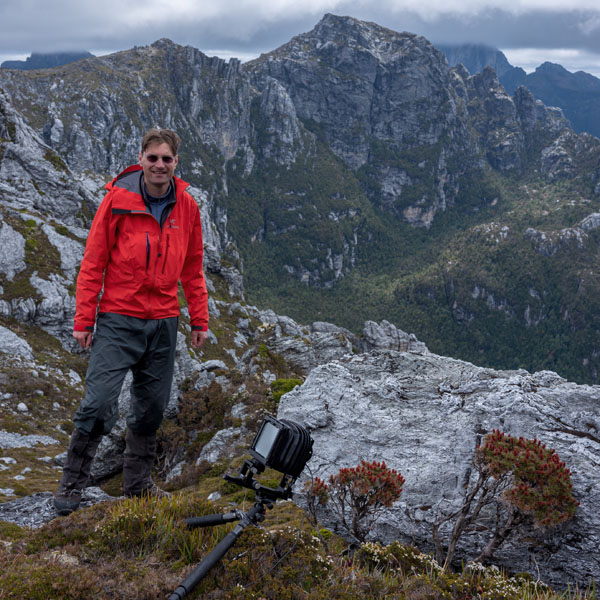
More of Mark Darragh’s work can be seen on his website.
His review of the Arca-Swiss F-Universalis 4×5 camera can be seen here.
His review of Kodak Ektachrome E100 4×5 film can be seen here.
His The Photograph Considered number six can be seen here.
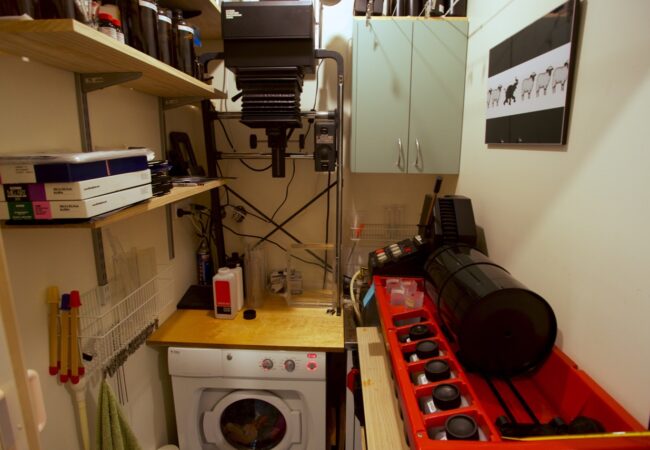


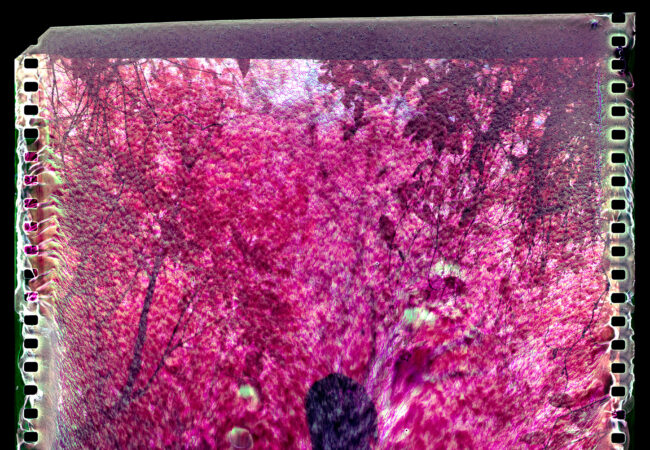
Both great images – carefully visualised and superbly rendered.
Reminds us what a great world we live in with endless photographic opportunities.
And time we started looking after the planet.
Thank you, Brian. I appreciate your comments.
That sure is marvelous light in Coastal Topographics No 1. The blending of aesthetics (composition and light?) and ecology (the littoral zone?) in the Coastal Topographics No 1 + No. 2 is underpinned by geology and the long history of the rocks. Would abstraction be another word for what Minor White termed “extractions” or “isolations” from the world of appearances?
Thank you, Gary. I always appreciate your insights. Yes, Minor White was indeed talking about abstraction in that passage I alluded to. Whether or not these photographs are truly abstract I guess depends on the person viewing the photographs. To me, they are quite literal details but when I share images like this or even show large exhibition prints of similar subjects, many people I’ve spoken to do find them quite abstract without any scale or context to the wider landscape. If that is true, hopefully, I’ve achieved an image to goes beyond being a mere representation.